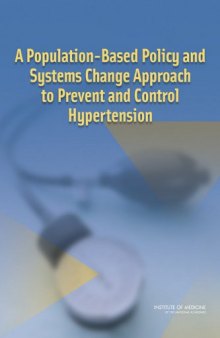 جزییات کتاب
جزییات کتاب
Hypertension is one of the leading causes of death in the United States, affecting nearly one in three Americans. It is prevalent in adults and endemic in the older adult population. Hypertension is a major contributor to cardiovascular morbidity and disability. Although there is a simple test to diagnose hypertension and relatively inexpensive drugs to treat it, the disease is often undiagnosed and uncontrolled. A Population-Based Policy and Systems Change Approach to the Prevention and Control Hypertension identifies a small set of high-priority areas in which public health officials can focus their efforts to accelerate progress in hypertension reduction and control. It offers several recommendations that embody a population-based approach grounded in the principles of measurement, system change, and accountability. The recommendations are designed to shift current hypertension reduction strategies from an individual-based approach to a population-based approach. They are also designed to improve the quality of care provided to individuals with hypertension and to strengthen the Center for Disease Control and Prevention's leadership in seeking a reduction in the sodium intake in the American diet to meet dietary guidelines. The book is an important resource for federal public health officials and organizations, especially the Center for Disease Control and Prevention, as well as medical professionals and community health workers.



 دانلود کتاب
دانلود کتاب

 جزییات کتاب
جزییات کتاب



 این کتاب رو مطالعه کردید؟ نظر شما چیست؟
این کتاب رو مطالعه کردید؟ نظر شما چیست؟
